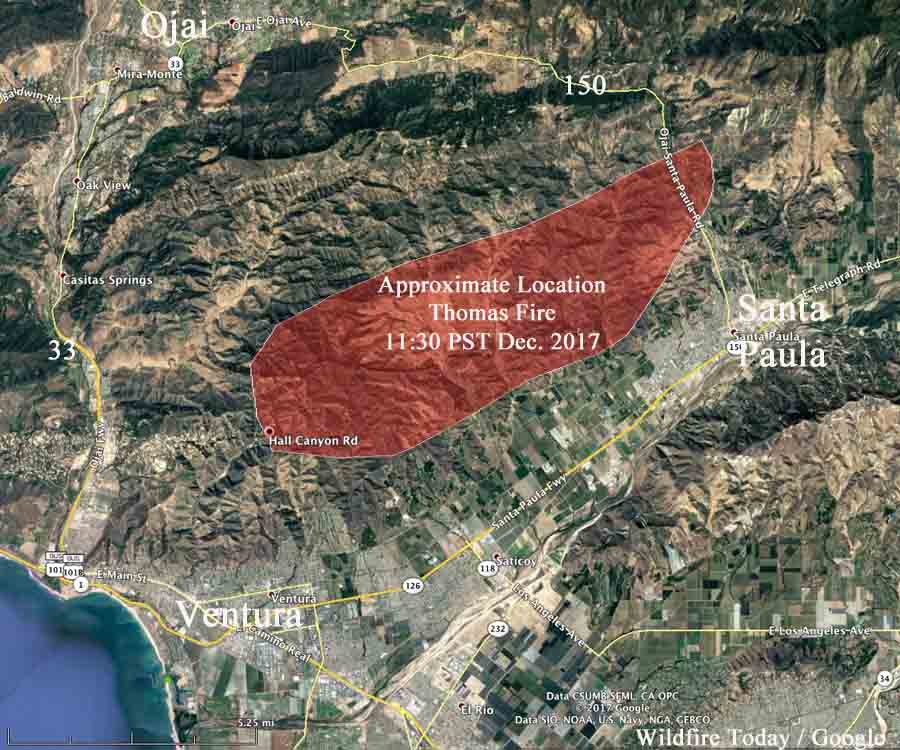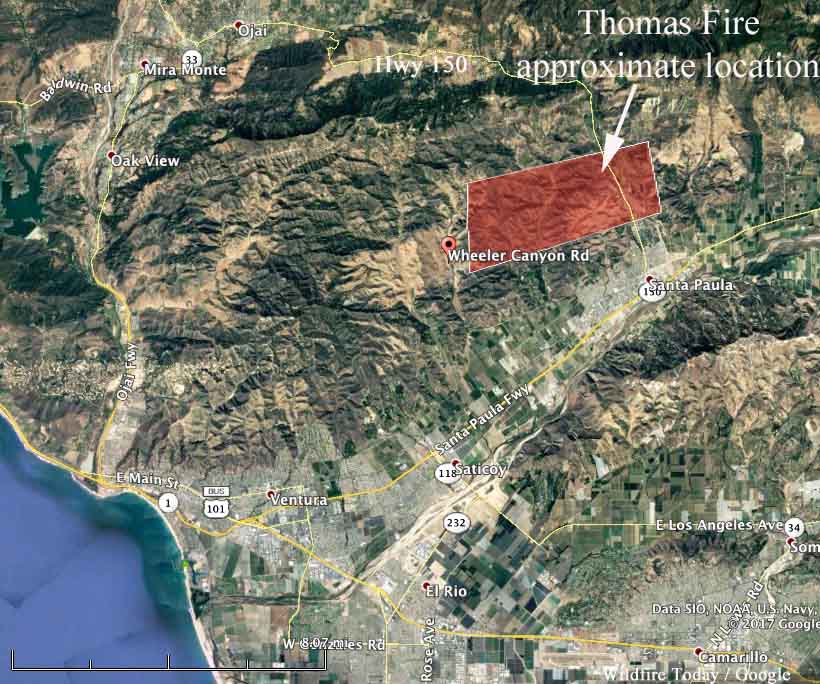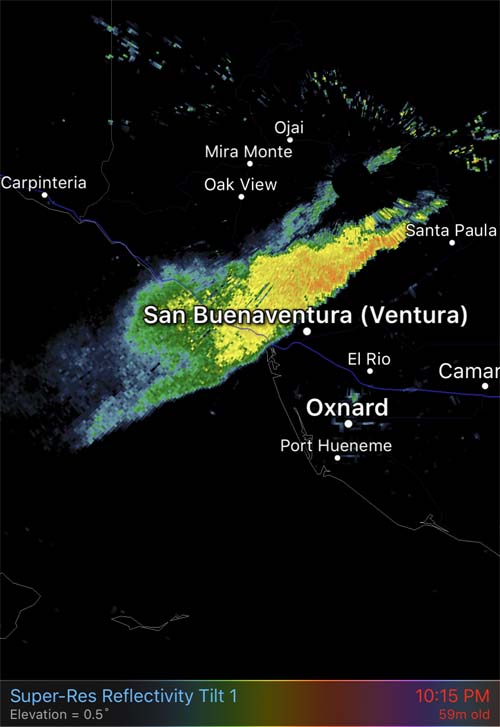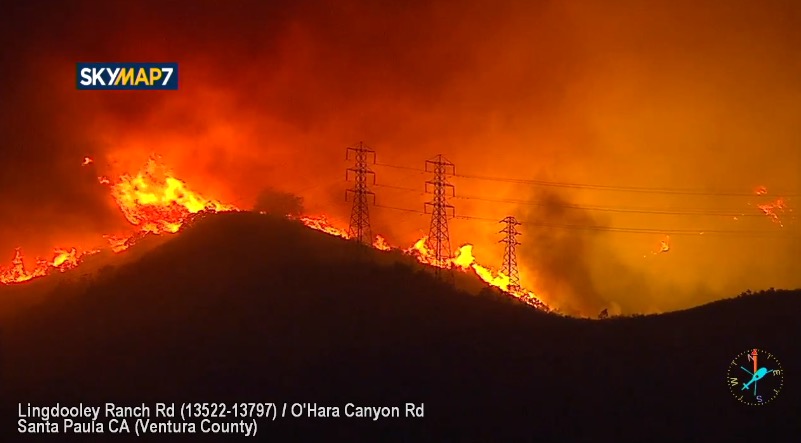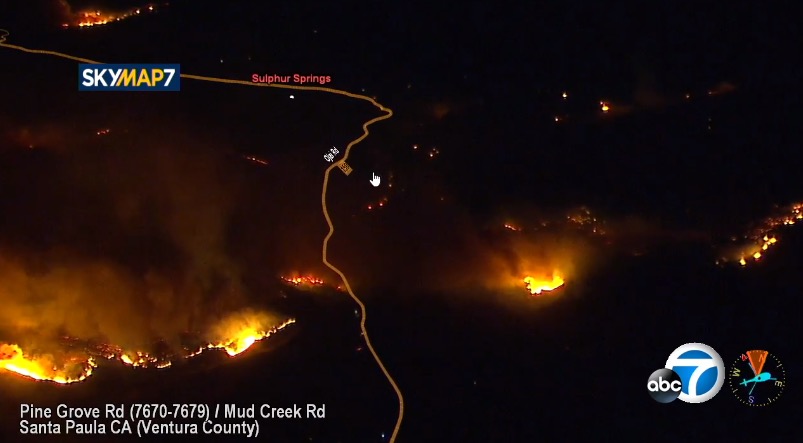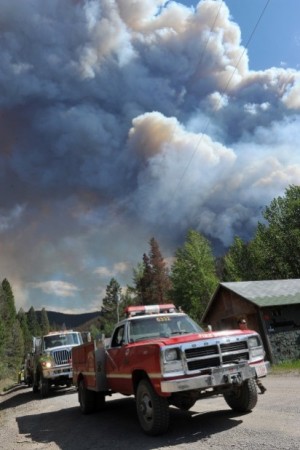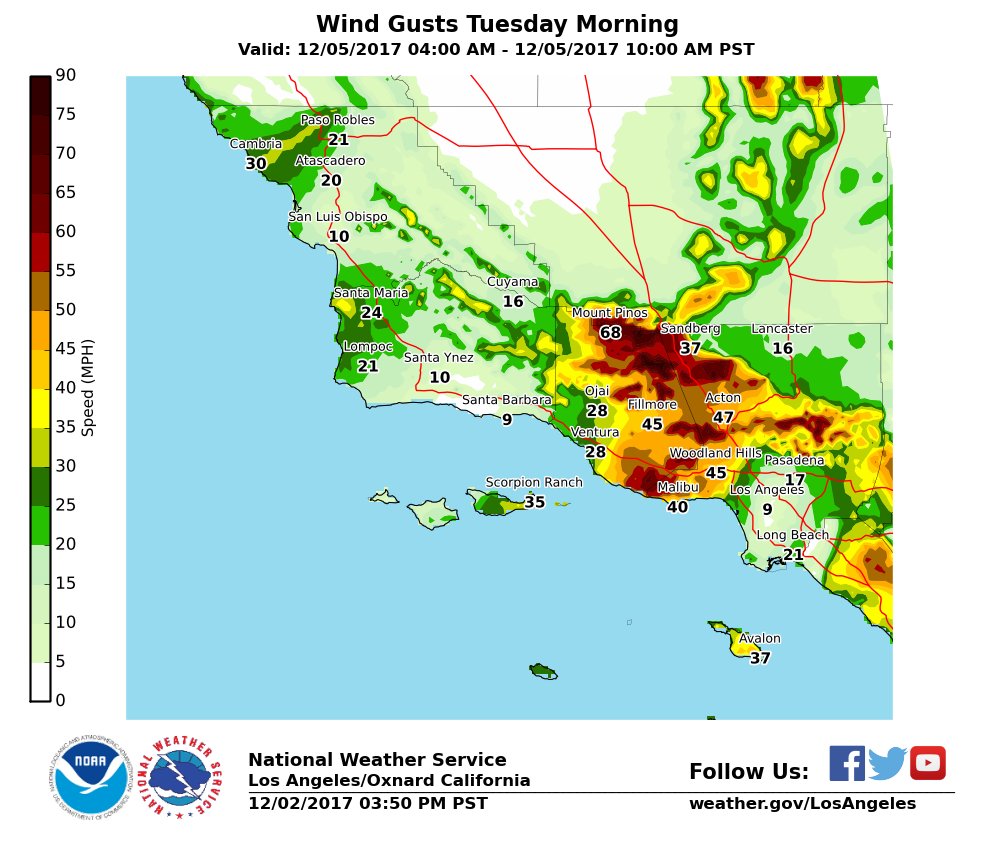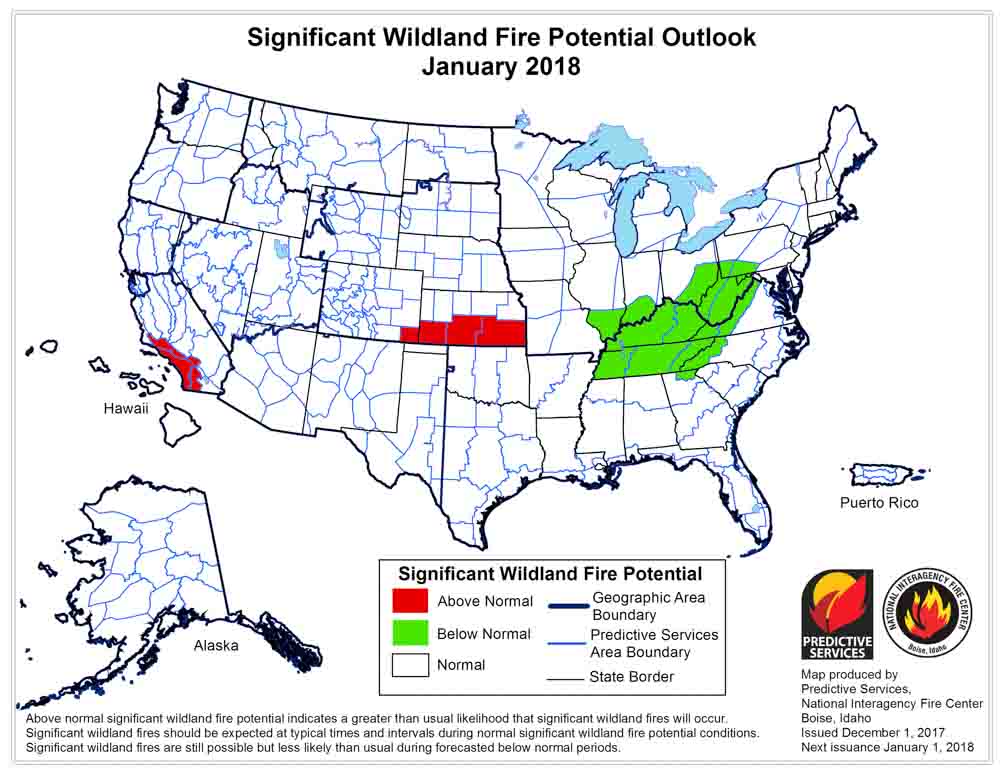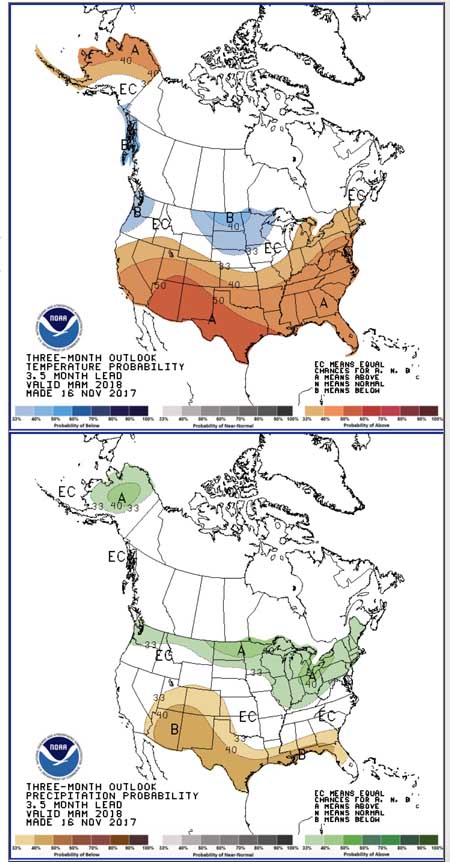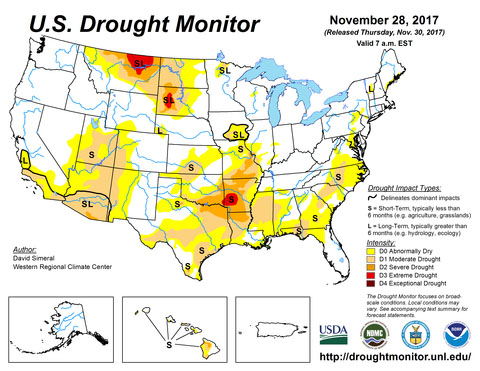The map above shows the approximate location of the Thomas Fire at 1:06 a.m. PST December 5, 2017 based on data from a satellite.
(UPDATED at 3:05 p.m. PST December 5, 2017)
Firefighters now estimate that the Thomas Fire which burned from Santa Paula to Ventura, California has now covered about 50,000 acres.
****
(Updated at 8:39 a.m. PST December 5, 2017. We will update this article on Tuesday as more information becomes available.)
The Thomas Fire has spread into the north side of Ventura, California, burning tens of thousands of acres. After it started Monday near Thomas Aquinas College very strong Santa Ana winds pushed it across Highway 150 close to Santa Paula and it then ran about 15 miles southwest to the edge of Ventura. About 27,000 people have been evacuated.
An update from Ventura County officials at 8 am Tuesday reported it had blackened 45,000 acres and destroyed about 150 structures. The areas of concern include Upper Ojai, Santa Paula, and Ventura.
The strong winds have made it impossible for fixed wing aircraft to fly low and slow near the ground as they have to do while dropping retardant or water. However early Tuesday morning helicopters were able to effectively work in some areas near Ventura. If the wind decreases Tuesday morning officials hope to have both types of aircraft available to assist firefighters on the ground.
Electrical outages have affected 260,000 homes and the lack of power at some water pumping facilities has left some fire hydrants dry.
Ventura County has more information about areas under evacuation orders.
#thomasfire Vista Del Mar Hospital burning. pic.twitter.com/8IBixCMp7L
— Joy Benedict (@joybenedict) December 5, 2017
Fire officials reporting palm trees on fire behind Ventura City Hall threatening historic homes. #ThomasFire now in urban environment
— Jon Passantino (@passantino) December 5, 2017
The #ThomasFire continues to rage from east of Santa Paula to Downtown Ventura/coast- nearly 20 miles https://t.co/iAWxqPnT7l @FOXLA @GDLA pic.twitter.com/nBsIgn9FJc
— Rick Dickert (@RICKatFOX) December 5, 2017
(Articles on Wildfire Today about the Thomas Fire are tagged “Thomas Fire“)


